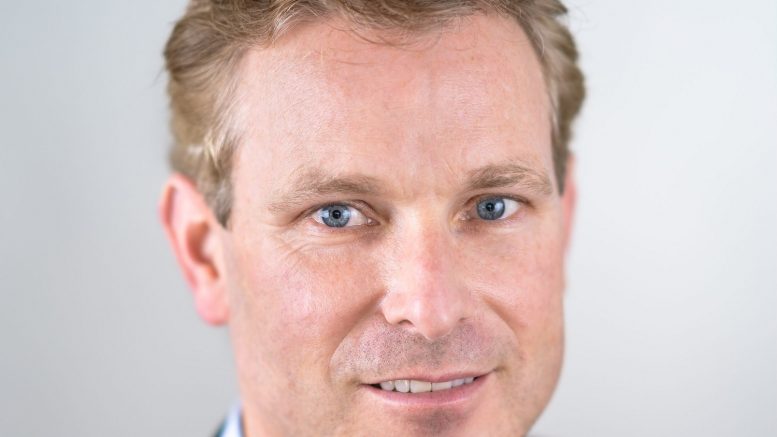For centuries, medicine has progressed with new treatments and therapies thanks to new ideas, discoveries and – perhaps most importantly – a willingness to take well-considered and evidence-based risks. The healthcare community has embraced emerging treatments and technologies that have ushered in tremendous medical advancements, saving millions of lives and improving countless more.
Fast forward to Today: Less Time/More Vendors
Increasing legislative and regulatory mandates, coupled with a desire to automate tasks and data, has resulted in a multitude of companies offering technological solutions, each claiming that their new technologies can advance medicine and improve healthcare delivery. To succeed, these companies not only require financial and human resources but – crucially – healthcare providers to recognize the value and buy into their solutions. At the same time, a growing number of physicians are actively embracing digital health innovations, which require significant analysis and validation prior to adoption in clinical practice.
Thus, we have a situation where vendors are constantly vying for physicians’ attention in order to demonstrate that their technology is the ideal solution to improve healthcare and, ultimately, help save lives. At conferences and trade shows, through marketing initiatives and an onslaught of sales calls, vendors can be tenacious in their attempts to catch physicians’ attention.
While undeniably well-intentioned – most health technology companies are on a genuine mission to improve healthcare – each also has its own motivation to grow their business and credibility. However, this oversaturation of vendors has created a situation where physicians find themselves spending too much time fielding the advances of vendors and not enough time where they are needed most – with their patients.
Time is a Diminishing Commodity
Today’s physicians wear multiple and diverse hats. These may include university teaching posts, research fellowships, or internal leadership projects that shape quality and safety. Along with required continuing education and certifications, many physicians engage in performance and quality improvement efforts, patient experience initiatives, and other scholarship and research programs. Simultaneously, administrative demands and regulatory requirements cause further strains on physician time.
Additionally, physician burnout is at an all-time high and nurses are leaving the profession in unprecedented numbers. In January, the AMA reported the results of an online survey revealing an overall physician burnout rate of 44 percent, with 15 percent claiming to have experienced colloquial or clinical forms of depression. With more physicians leaving the profession, there is also risk of adverse impact on patient satisfaction scores, health outcomes, and increasing care costs.
With fewer physicians taking on more roles, physicians’ time is a rapidly diminishing resource and one that must be protected. This is necessary to return to that key tenet many entered healthcare in the first place: caring for the sick. Physicians must therefore make thoughtful decisions regarding time devoted to innovation, to ensure that their time with solution providers is time well spent with those who can truly move the needle. Those are the solution providers who understand the energy required to deploy a clinical solution and can “walk the workflow.”
Vendors Must Prove Their Worth
To guarantee physicians are investing time with the right solution providers, vendors must ensure that they fulfil the ‘Triple Aim’ of healthcare, as outlined by Dr. Don Berwick and the Institute for Healthcare Improvement (IHI):
- Improving the patient experience of care – not just the overall health of individual patients, but also outreach and engagement through the continuum of care. One key aspect includes utilizing readily available patient data to ensure that, in the limited time available, physicians can effectively engage patients on a personal level by understanding their unique
- Improving the health of populations – ensuring the technology enables healthcare providers to manage increasingly large patient groups and target specific individuals to provide optimal and timely interventions.
- Reducing costs – accurately prioritizing care for individuals and subpopulations, in addition to improving overall health, provides the opportunity for significant cost savings in both the short and long term by increasing focus on those most in need of immediate intervention.
Recent years have seen the recognition of a fourth and crucial aim:
- Caring for the Caregiver – across all levels of the healthcare system, a new dialogue is required to create a more open culture that can address issues before they arise.
Adding it Up
Time with vendors can be time well spent or time wasted that could be better spent with patients. For solution providers, this means their solutions must be rigorously validated, tried and tested in both clinical implementations and retroactive studies for their usability, speed and operational efficiency leading to tangible results. It is their responsibility to adapt to the culture of each institution and remove any doubts to ensure they can meet patients’ needs sooner and easier, without adding to physician burdens.
Innovation in medicine often requires a leap of faith, diving in and testing new solutions. However, technology can only take medicine so far. Physicians should not be increasingly taken away from their most important task of caring for their patients by multiple vendors attempting to boil the ocean.
Rather than a blind leap of faith, a calculated risk is required where the time of a physician is preserved. It is prudent to focus on those vendors who fulfill the “Quadruple Aim” and provide proven results and validations to support their claims. Only then can we ensure that technology ultimately works to improve the lives of both patients and providers.
About the Author
Patrick Wells is Chief Customer Success Officer at EarlySign, a leading provider of machine learning-based solutions to help healthcare organizations accurately stratify populations to optimize care for individuals and prevent or delay high-burden diseases. Prior to joining Medial EarlySign, Patrick worked at IBM Watson Health and Deloitte & Touche where he was instrumental in leading multiple complex client engagements. Patrick has also held leadership roles at Mega International, CCH-Axentis and McKesson.





